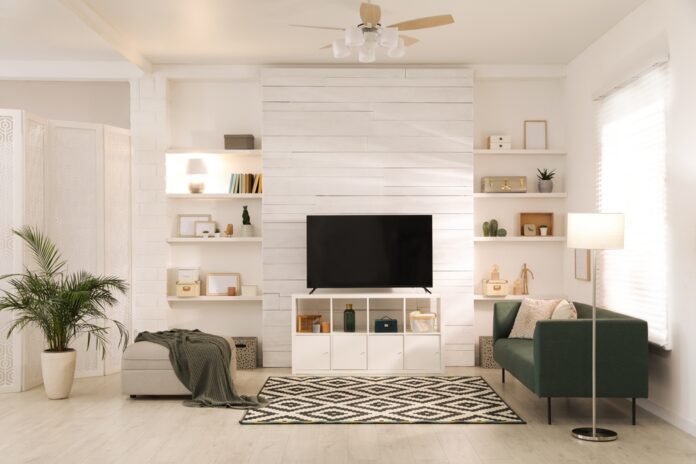Living in a small space doesn’t mean you have to compromise on style or comfort. With the right design strategies, you can transform even the tiniest of rooms into a spacious sanctuary. Here’s how to make your small space feel bigger using smart design techniques.
Declutter for Space and Serenity
One of the first steps to making a small room appear larger is decluttering. Clutter not only occupies physical space but also adds visual weight, making areas feel cramped. Regularly tidying up and ensuring everything has its place can make a significant difference. Clutter not only takes up physical space but also adds visual weight, making small rooms seem even smaller.
Embrace Light and Neutral Colors
Light colors reflect natural light, creating an airy and open feel. Painting your walls in soft whites, creams, or light neutrals can instantly brighten up a room. Using lighter paint colors like creams and whites can reflect natural light and make rooms appear larger.
Opt for Consistent Flooring
Continuity is key when it comes to flooring in small spaces. Using the same type of flooring throughout your home, such as hardwood or laminate, can create a seamless flow. Continuous flooring across a home can enhance a spacious feel. Add warmth and texture with rugs that complement the flooring without overwhelming the space.
Mirrors Are Your Best Friend
Strategically placing mirrors can significantly enhance the perception of space. They reflect both natural and artificial light, bouncing it deeper into the room. Mirrors are a budget-friendly tool for creating an illusion of space by reflecting light. Avoid mirrored furniture, which can add visual clutter.
Choose Furniture Wisely
Selecting the right furniture is crucial in a small space. Opt for pieces that are proportionate to the room. Furniture with optimal proportions fits the small space without overwhelming it. Consider low-slung furniture to open up vertical space, and use clear materials like glass or acrylic to reduce visual barriers.
Multipurpose and Elevated Furniture
Invest in multipurpose furniture, such as ottomans with storage or sofa beds. Multipurpose furniture enhances spatial perception and functionality. Elevated sofas and chairs expose more floor area, making the room feel larger.
Minimize Window Treatments
Heavy drapes can make a room feel boxed in. Instead, use minimalist window treatments like rolling blinds that match the wall color. Minimizing decorative window treatments prevents space encroachment.
Create Negative Space
Allowing for empty spaces, or negative space, in a room can make it feel more open. Don’t feel the need to fill every corner. Creating negative space enhances a small room’s appearance by reducing visual clutter.
Use Large Decorative Accents
Instead of displaying many small decorative items, choose a few larger pieces. Accentuating a room with larger but fewer decorative items makes a small room feel larger. [^3] This could be a sizeable piece of artwork or a statement lamp.
Enhance Lighting Layers
Lighting plays a pivotal role in how spacious a room feels. Incorporate multiple sources of light, such as ambient, task, and accent lighting. Varied light sources create layering effects that enhance the perception of space.
Align Paint Colors with Furnishings
For a harmonious look, align your wall colors with your flooring and furniture. The alignment of paint colors with flooring is crucial for harmony. This creates a cohesive aesthetic that can trick the eye into perceiving more space.
Utilize Vertical Space
Don’t just think horizontally; look up! Use shelves and hooks to make the most of your vertical space. Utilizing vertical space provides added storage solutions without consuming floor area.
Thoughtful Furniture Arrangement
How you arrange your furniture can impact the flow of the room. Position pieces to allow for easy movement and to enhance the room’s openness. Positioning furniture thoughtfully allows breathing space and improves flow.
Conclusion
Making a small space look bigger is all about smart design choices that enhance the perception of space. By decluttering, using light colors, choosing the right furniture, and strategically placing mirrors and lighting, you can transform your small area into a stylish and spacious haven. Remember, it’s not about the size of the space but how you utilize it.
Clutter not only takes up physical space but also adds visual weight, making small rooms seem even smaller. Source
Continuous flooring across a home can enhance a spacious feel. Source
Furniture with optimal proportions fits the small space without overwhelming it. Source


